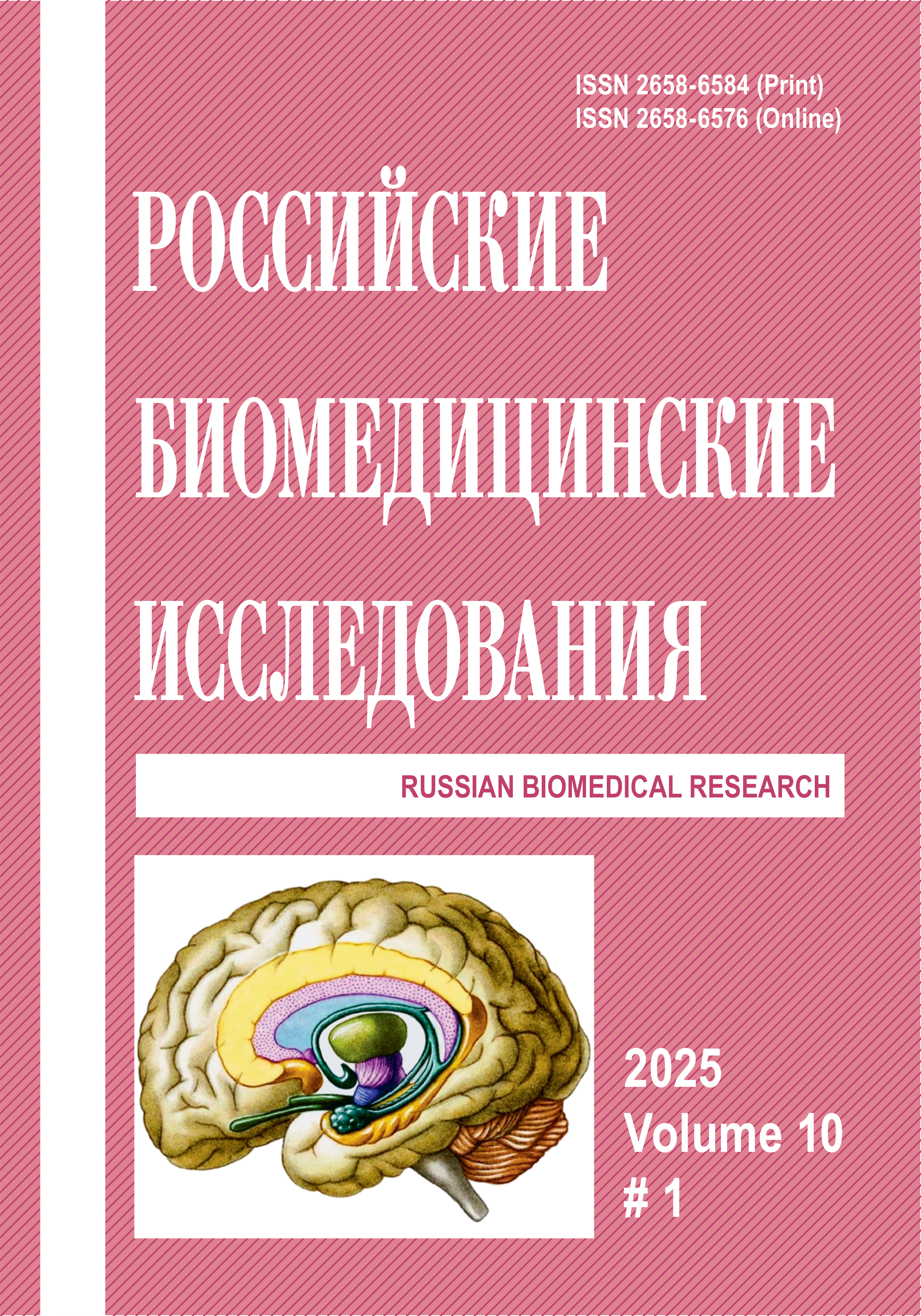MORPHOMETRIC AND HISTOCHEMICAL CHARACTERISTICS OF THE ESOPHAGEAL EPITHELIUM AFTER ADMINISTRATION OF MORPHOGEN AND CYTOSTATIC DRUG
Abstract
Introduction. Esophagitis of various etiologies, metaplasia (Barrett’s disease) and cancer are a serious problem at the current stage of medical development. Understanding the regulation of esophageal epithelial proliferation and differentiation is crucial for developing effective therapeutic strategies. The aim of the study was to conduct a comparative analysis of the effects of the peptide morphogen hydra and the cytostatic drug cyclophosphamide on the morphometric and histochemical parameters of the esophageal epithelium in mice, with special attention to changes in tissue organization characterized as heteromorphism. For the first time, a comprehensive approach combining morphometric, histochemical, and immunohistochemical methods is presented to assess the effect of these drugs on epithelial cell proliferation and metabolism. Materials and methods. 45 white mongrel mice were used in the experiment. Groups of animals were injected intraperitoneally with the peptide morphogen hydra (PMG) (100 mcg/kg) or cyclophosphamide (CF) (400 mg/kg) for 5 days, the control group received saline solution. Histological analysis, morphometry, histochemistry (NADH-diaphorase and succinate dehydrogenase activity), and immunohistochemistry (detection of nuclear antigen of proliferating PCNA cells) were performed 24 hours after the last injection. The results showed that the peptide morphogen of hydra induces epithelial hyperplasia, mainly due to the spiny layer, and increases the activity of NADH-diaphorase and succinate dehydrogenase, as well as the proliferative index. Cyclophosphamide causes hyperkeratosis, impaired differentiation, and decreased enzyme activity, with a paradoxical initial increase and then decrease in proliferative activity. Conclusions. The peptide morphogen of hydra and cyclophosphamide cause opposite changes in the epithelium of the esophagus, enhancing its heteromorphism. The data obtained are important for understanding the pathogenesis of chemotherapy complications and developing new strategies for the treatment of esophageal diseases.
References
Морошек А.А., Бурмистров М.В. Аденокарцинома пищевода. Обзор литературы. Состояние проблемы к началу ХХI века: клиника, диагностика, лечение. Поволжский онкологический вестник. 2020;11(3):32–53.
Biswas S., Quante M., Leedham S., Jansen M. The metaplastic mosaic of Barrett’s oesophagus. Virchows Archiv. 2018;472:43–54. DOI: 10.1007/s00428-018-2317-1.
Lalla R., Bowen J. Mucositis (oral and gastrointestinal). The MASCC Textbook of Cancer Supportive Care and Survivorship. Springer; 2018:409–420. DOI: 10.1002/cncr.33100.
Blijlevens N.V., Land B., Donnelly J.P. et al. Measuring mucosal damage induced by cytotoxic therapy. Supportive Care in Cancer. 2004;12(4):227–233. DOI: 10.1007/s00520-003-0572-3.
Bowen J., Al-Dasooqi N., Bossi P. et al. The pathogenesis of mucositis: update perspectives and emerging targets. Supportive Care in Cancer. 2019;27:4023–4033. DOI: 10.1007/s00520-019-04893-z.
Van Sebille Y., Stansborough R., Wardill H. et al. Management of mucositis during chemotherapy: from pathophysiology to pragmatic therapeutics. Current Oncology Reports. 2015;7:50. DOI: 10/1007/s11912-015-0474-9.
Звартау Э.Э. Руководство по использованию лабораторных животных для научных и учебных целей в СПбГМУ им. акад. И.П. Павлова. СПб.: СПбГМУ; 2003.
Лойда З., Госсрау Р., Шиблер Т. Гистохимия ферментов. М.: Мир; 1982.
Ашмарин И.П., Обухова Н.Ф. Регуляторные пептиды, функционально непрерывная совокупность. Биохимия. 1985;51(4):531–545.
Endogenous Regulatory Peptides: Chemistry, Biology and Medical Significance. Ed. J. Menyhart. Budapest: Academia Kiado; 2022.
Кулаева В.В., Быков В.Л. Морфометрическая и гистохимическая оценка изменений эпителия пищевода при воздействии пептидного морфогена гидры. Сборник Трудов международной научно-практической конференции посвященной 85-летию Белорусского государственного медицинского университета). Минск: БГМУ; 2006:89–90.
Кулаева В.В., Леонтьева И.В., Быков В.Л. Реакция эпителия слизистой оболочки полости рта на воздействие цитостатика и морфогена. Морфология. 2019;155(2):170. DOI: 10.17816/morph.103795.
Леонтьева И.В., Кулаева В.В., Быков В.Л. Сравнительная и морфофункциональная характеристика и гетероморфия эпителия языка при воздействии цитостатика и морфогена. Морфология. 2019;155(3):33–38. DOI: 10.17816/morph.101949.
Dabrowski A., Szumilo J., Brajerski G., Wallner G. Proliferating nuclear antigen (PCNA) as a prognostic factor of squamous cell carcinoma of the oesophagus. Ann. Univ. Mariae Curie Sklodowska. 2001;56:59–67.
Basile D., Di Nardo P., Corvaja C. et al. Mucosal injury during anti-cancer treatment: from pathobiology to bedside. Cancers. 2019;11(4):857. DOI: 10.3390/cfncer11060857.
Copyright (c) 2025 Russian Biomedical Research

This work is licensed under a Creative Commons Attribution 4.0 International License.



